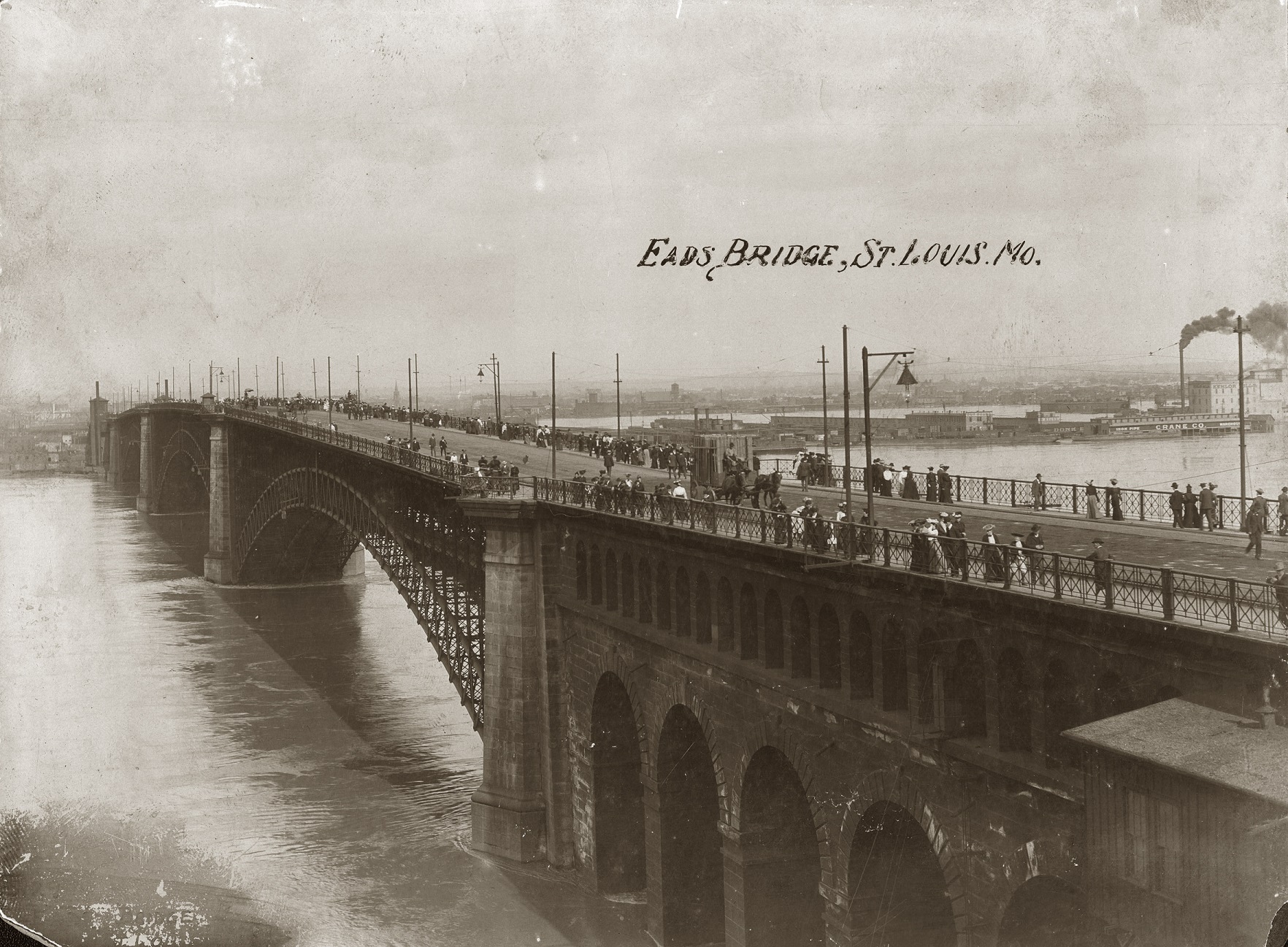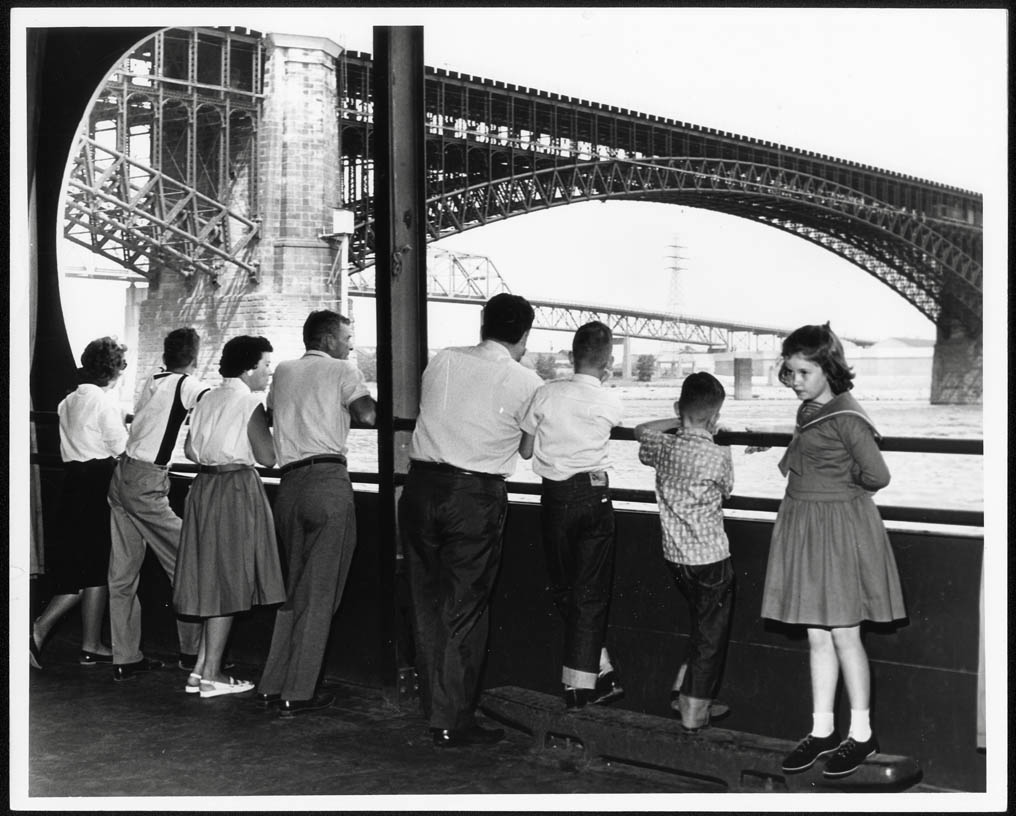
The landmark Eads Bridge, one of the greatest engineering marvels of its time, is turning 150 years old this Fourth of July.
A new exhibit at the Missouri History Museum, “Eads Bridge at 150,” turns the spotlight of the world’s first steel-arch bridge, the complexities of its design and construction, and the important role it has played since it opened in 1874.

The bridge, which spans across the Mississippi River, is named after James Eads, a self-taught engineer who designed and operated a salvage boat that allowed him to scour the bottom of the Mississippi for steamboat wrecks. After a successful career in salvage work, he won a government contract to build ironclad gunboats for the Civil War. He also invented a steam-powered rotating gun turret.
While Eads was sought after for his mechanical design projects, he had never designed a bridge when he was tapped as chief engineer by the Illinois and St. Louis Bridge Company to build one to connect Missouri and Illinois. Construction on the bridge took seven years to complete at a cost of $6.5 million.
On July 4, 1874, President Ulysses Grant presided over Opening Day festivities attended by 200,000 spectators, who witnessed a spectacle, including 14 trains filled with coal and water moving along the railroad tracks and a circus elephant marching across the bridge to show off the bridge’s stability.

Considered St. Louis’ original landmark, the Eads Bridge was named a National Historic Landmark in 1964, one year before construction of the Gateway Arch was completed.
Today, the bridge is part of Gateway Arch National Park and carries more than 2,000 cars and 300 Metrolink trains daily.
The “Eads Bridge at 150” exhibit is located in the Missouri History Museum atrium.





